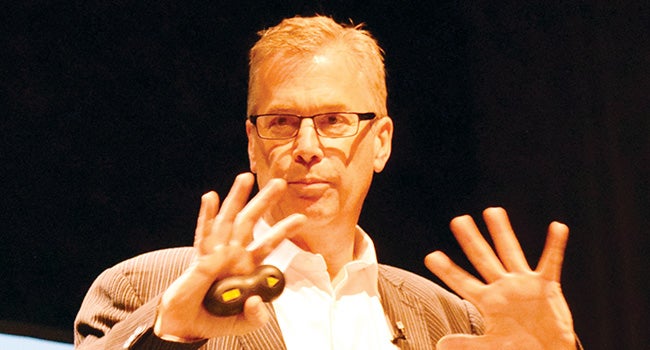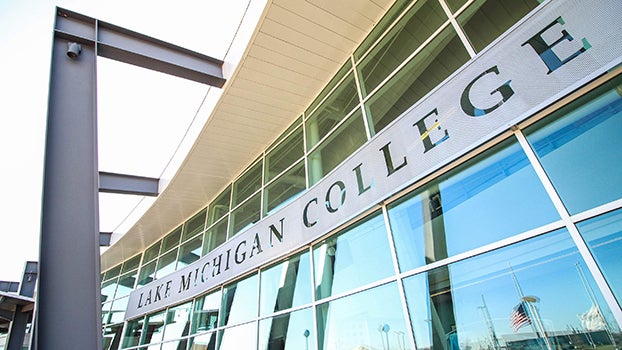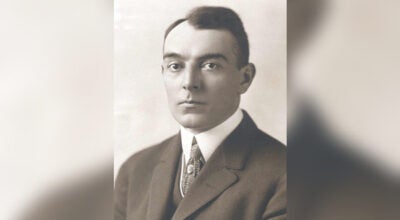Students studying for jobs yet to be invented, shares speaker at SMC
Published 2:59 pm Sunday, October 29, 2017

- (Submitted photo)
Students in school today can expect to change jobs 11 times between ages 18 through 42.
Sixty-five percent will find themselves working at jobs which do not yet exist, said Jim Wardlaw, owner and chief change agent for Stitch Brand and Culture in Buffalo, New York, Oct. 26 in his lecture, “Creative Thinking: A Crucial 21st Century Workplace Skill,” for Southwestern Michigan College’s Academic Speaker Series.
Four trends drive emphasis on creativity: exponential, overwhelming speed of change; information overload; workplace demand; and new challenges.
“Before light bulbs, you went to bed when the sun went down,” Wardlaw said. “Our workday was when it was light outside. Today, people can work 24/7. Product life cycles are accelerating dramatically. High-tech products move into markets in a matter of months. Honda went from 60 to 36 months for product development; GE, 84 to 48; Mattel, 18 to five; Hewlett Packard, 54 to 22; Honeywell, 48 to 10.”
Innovation “is a very important part of how we move forward strategically,” Wardlaw said. “Seventy percent of executives see innovation as one of their top three drivers for growth. Seventy-five percent see it as one of the top three additions in their business. Eighty-four percent recognize it as one of the very important initiatives they adopt. Everything we do today is about moving things forward quickly. It’s exhausting! In 1900, less than 10 percent of jobs were in ‘creative industries.’ By 2000, 30 percent.”
“Remember about all this speed,” he added, “You can have creativity without innovation, but you cannot have innovation without creativity. Creativity is what drives practical application of great ideas to problems.”
“We have more information than we know what to do with,” Wardlaw said. “YouTube posts 300 hundred hours of new video every minute. Five billion videos are viewed daily. It took from the beginning of calendars to 1500 for information to double; 250 years for it double again; and 150 years for it to double again; from 1900 to the mid-’50s, it doubled every 25 years. In 2006, IBM said data doubled every 11 hours. It’s more than we can comprehend. By 2020, every human on the planet will be generating 1.7 megabytes of information a second. The problem with holding the world in your hands is we’re completely overstimulated. Set (your phones) down every once in a while. Your brain needs time to catch up and reflect. We’re all dopamine addicts.”
Wardlaw defined creativity as the ability to modify self-imposed constraints.
All people are creative, though capabilities vary.
There is a “call for creativity” from workplaces seeking problem-solving, flexibility, adaptability and leadership with the “rub being it’s difficult to find.”
“An environment where ideas are the currency is more productive, impacting the bottom line. Leadership is 40-60 percent responsible for the creative climate. Of jobs today, 47 percent are likely to be automated in the next 20 years. Those that are future-proof are human skill-based and require ideas, insight, interaction and thinking, undergirding the importance of creativity and innovation. It is our purpose in life to create. It’s the compulsion that drives us forward.”
Wardlaw earned a master’s degree in creative studies from the International Center for Studies in Creativity at SUNY Buffalo State.
For 12 years, 1995-2007, he served as CEO/principal of Publicom, an East Lansing advertising agency specializing in brand management for clients throughout the Midwest.
He held executive positions with McLaren Health Care Corp. in Flint in 2008-09 and Lifestyle Lift in Troy, 2009-12.
“I’m more an entrepreneurial guy than a corporate guy,” Wardlaw realized. “In high school, I was voted ‘Most Head in the Clouds.’ I ran for state Senate. I was recognized as Entrepreneur of the Year by Greater Lansing Business Monthly magazine.”
He moved to Buffalo in 2012 “after I got hit by a ‘freight train.’ My marriage of 25 years ended, my father died and I lost my corporate job in the span of two months. I think I had the honor of being the student with the longest commute. Every Monday, I drove from Detroit to Buffalo, lived in a little rented room and drove back every Thursday. I did that for a year and a half.”
Wardlaw, a 1980 Union High School graduate whose “journey to creativity started here in Dowagiac,” the night before heard Round Oak Revisited’s ghost stories at Philo’s.
“One was about the Dewey Lake monster,” he said. “We used to challenge everyone to walk alone down Swisher Street.”
Wardlaw moved to Sister Lakes in 1975 and lived at Dewey Lake until leaving for Michigan State University and his 1985 graphic design bachelor’s degree.





